Period/ Social Context
- The conflict between England and Ireland.
- TheGlorious Revolution.
- The basic principles of the Enlightenment culture of eighteenth-century England.
- The Age of Reason.
- The Neoclassical Period.
- The reign of Queen Anne.
- English Civil War (1642-1649).
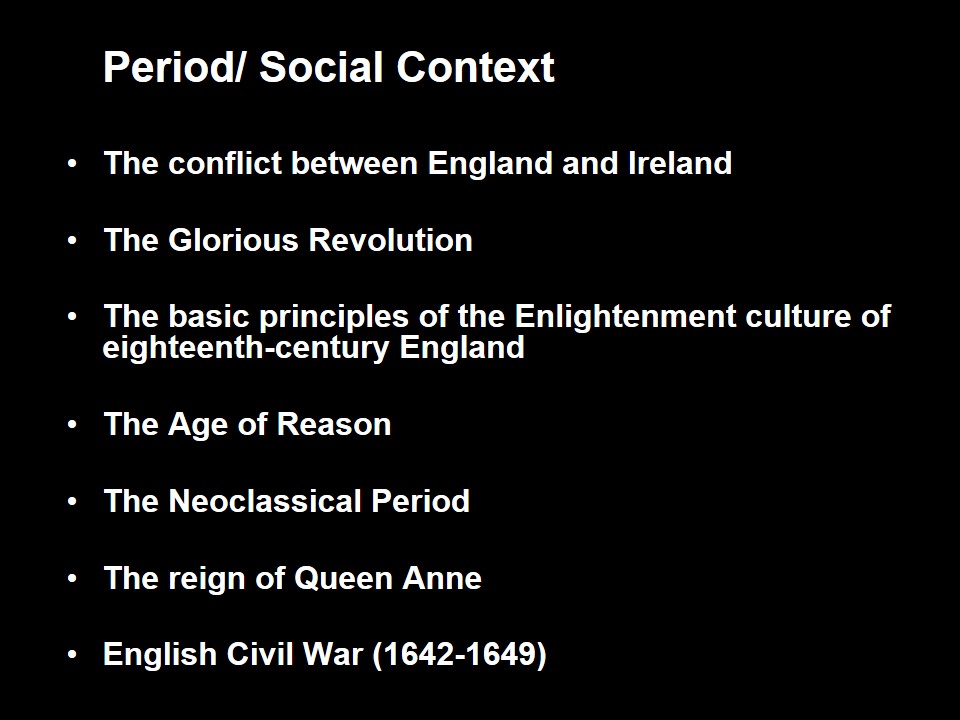
Genre
Megagenre: the novel; key work in travellers’ tales literary sub-genre and a classic of English literature. The novel combines a satire on human nature and a parody:
- Style: technical writing combined with different kinds of jargon (i.e. parodic and absurd writing style).
- The ideas presented in the novel seem to be rather sceptical (problems of the narrative style) satire of European culture and politics.
- Most famous film examples: Rob Letterman’s film Gulliver’sTravels (2010) (below, left) and Dave Fleischer’s film Gulliver’sTravels (1939) (below, right).
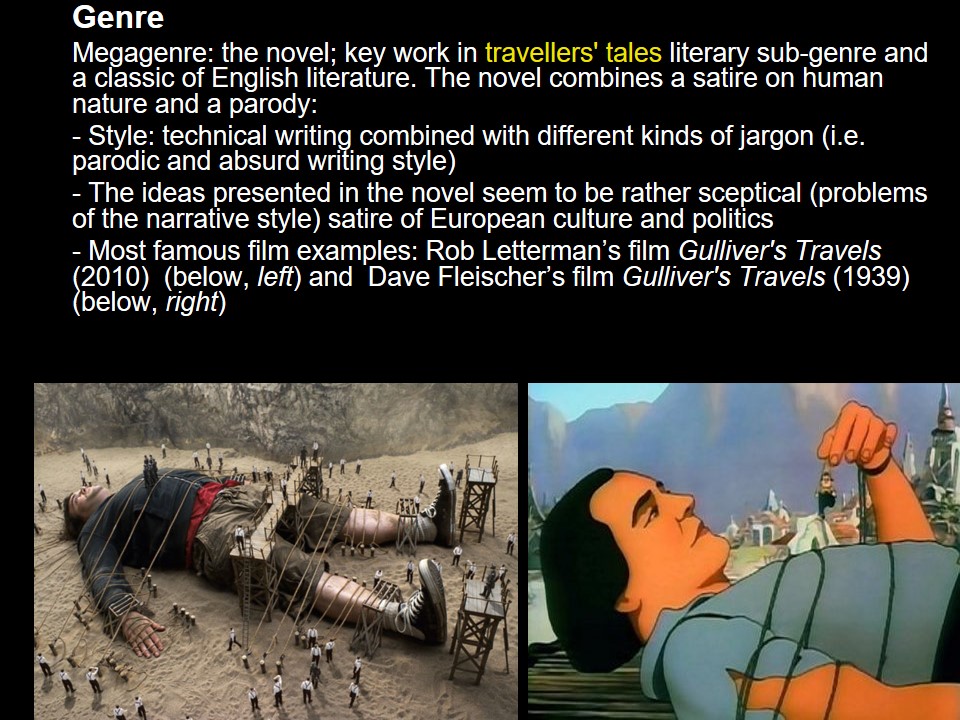
Mode
Written. Graphic novel (cover, right).
Medium
Published hard copy, hardback.
Register
A satire, a parody, a fantasy; contains the elements of proto-science fiction; written in narrative style; the major themes include political-religious satire; might vs. right; morality and ethics; science and technology; the individual vs. society; culture/traditions; imperfection of human nature.
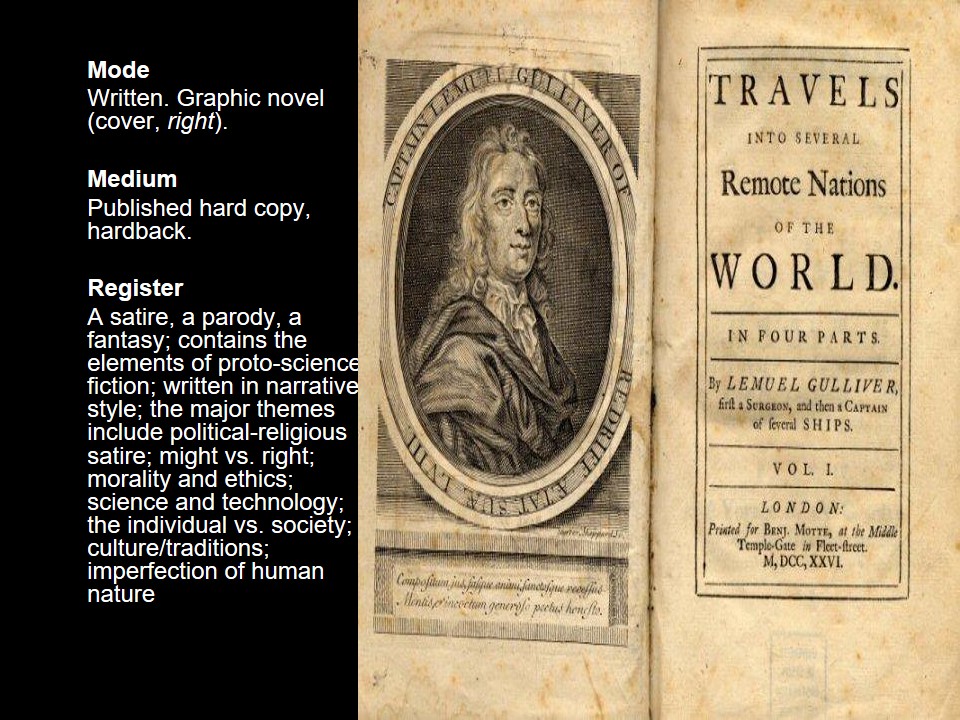
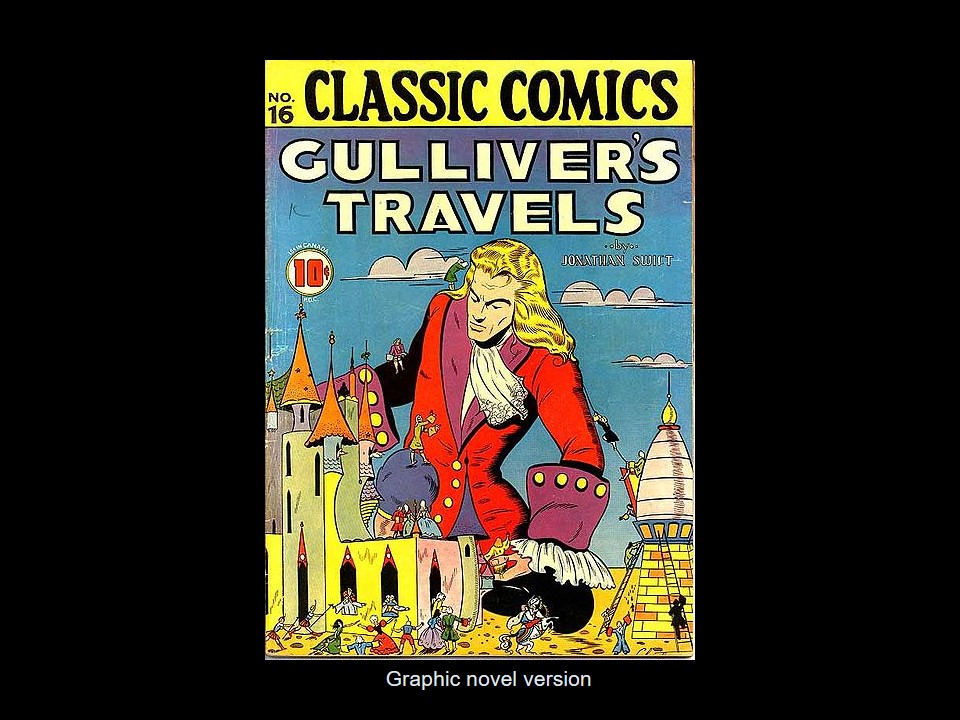
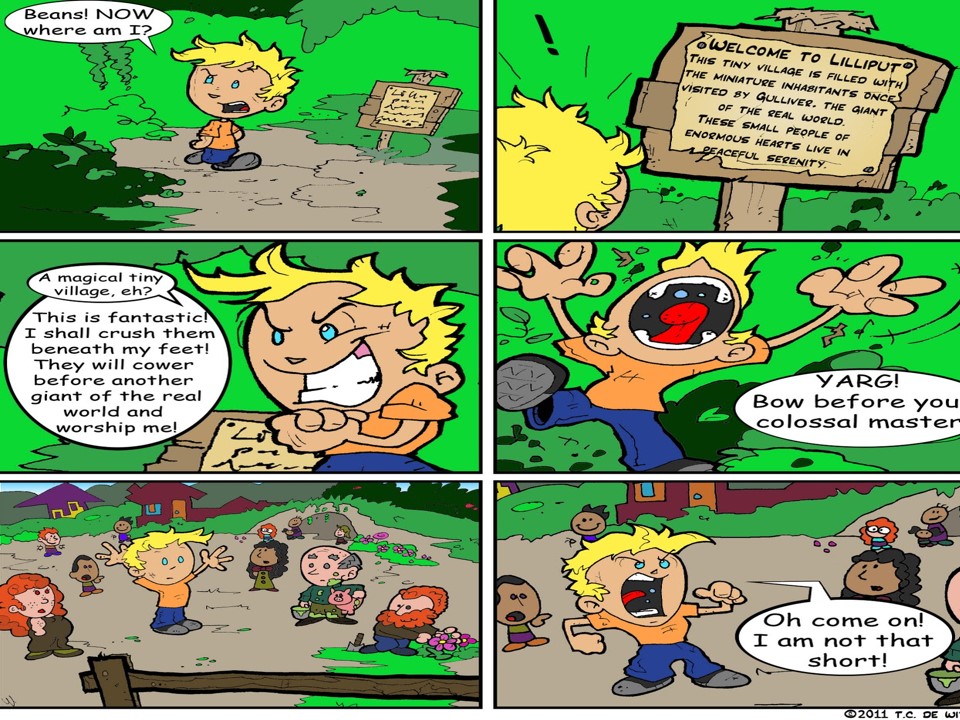
Purpose
- Entertainment (sold over a million copies abroad alone).
- The main character uses mathematical and scientific language of his time, in order to disclose the burning problems of the period.
- The author depicts serious philosophical issues concerning human existence.
Ideological Positioning
- Repulsion, parallelism, and attraction seem to be the key issues of the author’s interest.
- A parody of colonialism; the sense of human existence is attacked by the author.
Audience
- The novel is recommended not only for children, but also for adults who are fond of satirical productions and fantasy. Thus, “Gulliver’s unique understanding of human sociality confronts the reader in a way that feels quite aggressive, his unusual perspective working to estrange readers or deregularize their sense of connection with their kind” (Rodas, 2010, p. 5).
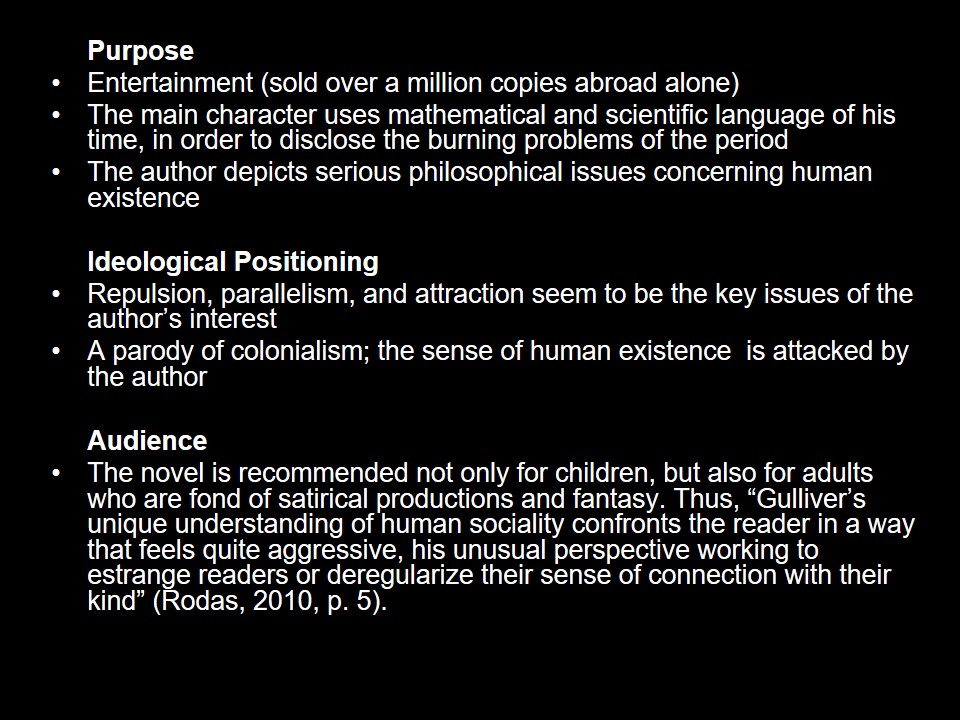
Stylistics – Language analysis
- Graphology:
- Gulliver’sTravels consists of four parts: Part One: A Voyage to Lilliput, Part Two: A Voyage to Brobdingnag,Part Three: A Voyage to Laputa, Balnibarbi, Luggnagg, Glubbdubdrib, Japan, and Part Four: A Voyage to the Country of the Houyhnhnms. The total number of chapters is 39. The author provides the readers with short descriptions of each chapter.
- Lexis:
- Gulliver’sTravels is based on sarcasm, irony, and exaggeration, in order to disclose people’s stupidity. Using the above-mentioned literary techniques, “Swift attacks pettiness, violence, ethnocentrism, stubbornness, irrationality, religion, and government” (LeBoeuf, 2007, p. 8). He shows the deficiencies in English behavior.
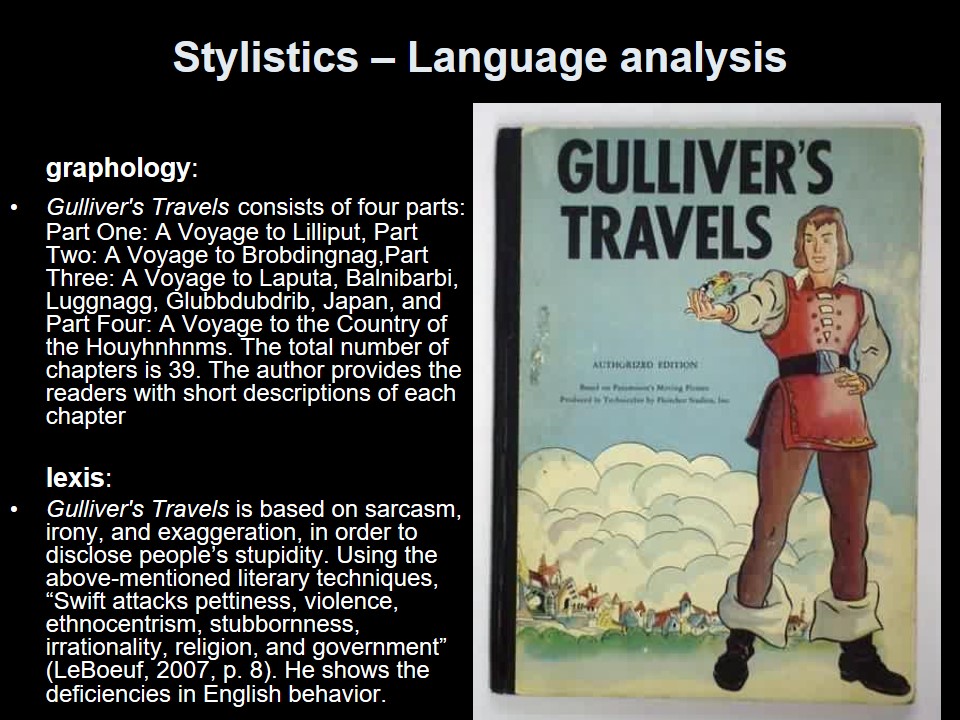
“In the Travels, Swift addresses the question regarding the teachability of virtue through the notion of autodidacticism. Swift consistently uses a metaphor traceable to Aristophanes to express this notion” (Nordell, 2000, para. 1).
The motifs of the novel
- Excrement:
- when speaking about the fundamentals of the Enlightenment culture of eighteenth-century England, one is to keep in mind that human beings were considered as noble creatures; so, no vulgar contexts were permitted. Thus, the motif symbolizes the so-called ignoble things concerning human existence.
- Foreign languages:
- a cross-cultural sensitivity the novel is based on does not reflect the real issues concerning cultural differences. On the contrary, the author speculates his character’s mastery of foreign languages, in order to show that there are no similarities between the cultures.
- Clothing:
- the motif reflects a deep-seated anxiety of the main character’s identity.
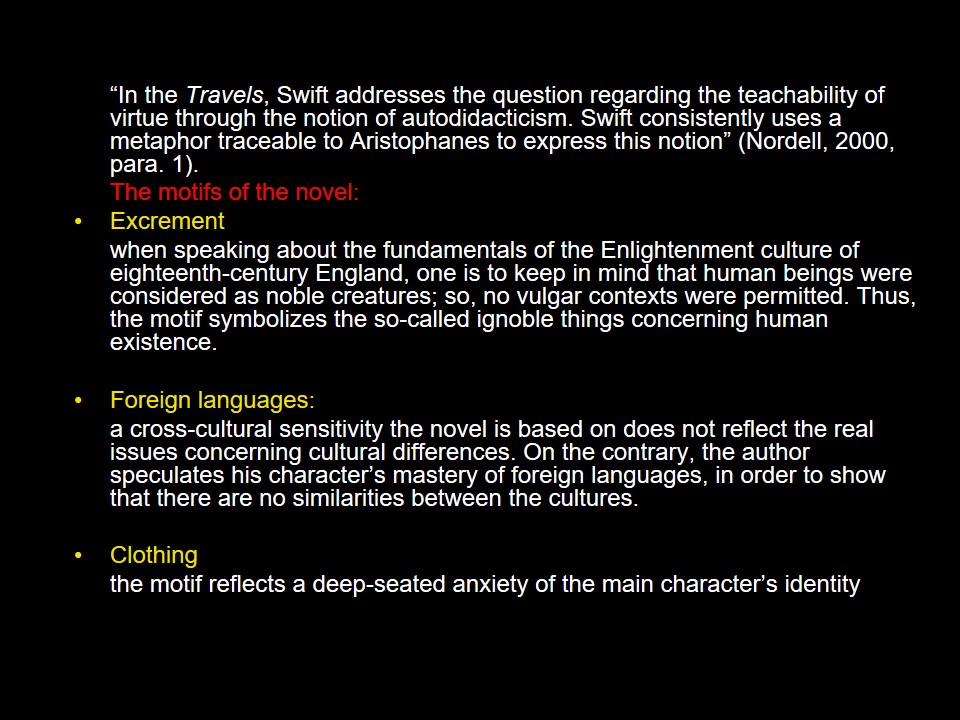
The symbols of the novel
- Lilliputians
- the creatures symbolize humankind’s grandiose imaginings and pride
- Brobdingnagians
- The Brobdingnagians are associated with people’s personal life. The author depicts the importance of family relations and private life
- Laputans
- The Laputans symbolize the advantages of the traditional knowledge and the absurdity of Enlightenment intellectualism
- Houyhnhnms
- The Houyhnhnms reflect Plato’s ideal community
- England
- the country is associated with deficiency in spheres, which are important for the main character
Syntax and grammar
“Gulliver’s Travels helps students see what things they can rightly take pride in without getting too big for their britches. It suggests that the proper use of reason is not to figure out the mysteries of the universe but to gain self-knowledge and attain the golden mean so prized by the ancient Greeks and Romans” (Marshall, 2003, p. 5).
The novel is full of proper adjectives, coordinating conjunctions, verbs, proper nouns. The most common concepts reflect general vs. specific, subjective vs. objective, and perspective concepts.
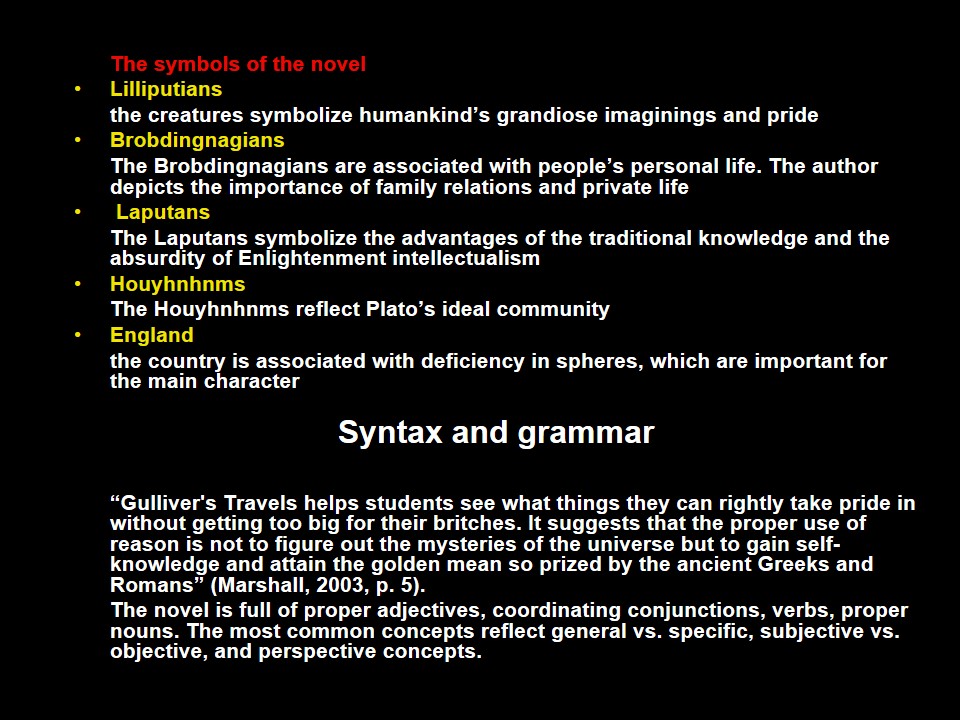
Intertextuality
Gulliver’sTravels is closely related to The Mysterious Island:
“17-year-old Sean Anderson receives a coded distress signal from a mysterious island where no island should exist. Unable to stop tracking the signal, he sets out with a small group on a journey to the mysterious island – a place few people have ever seen or lived to tell about. What they find is an island of stunning beauty, strange and threatening life forms, volcanoes, mountains of gold and more than one astonishing secret” (“Warner Bros. Publicity,” 2012, para.2).
However, it should be pointed out that Gulliver’sTravels and The Mysterious Island reflect the common theme of exciting adventures. The film does not reflect political/religious satira.
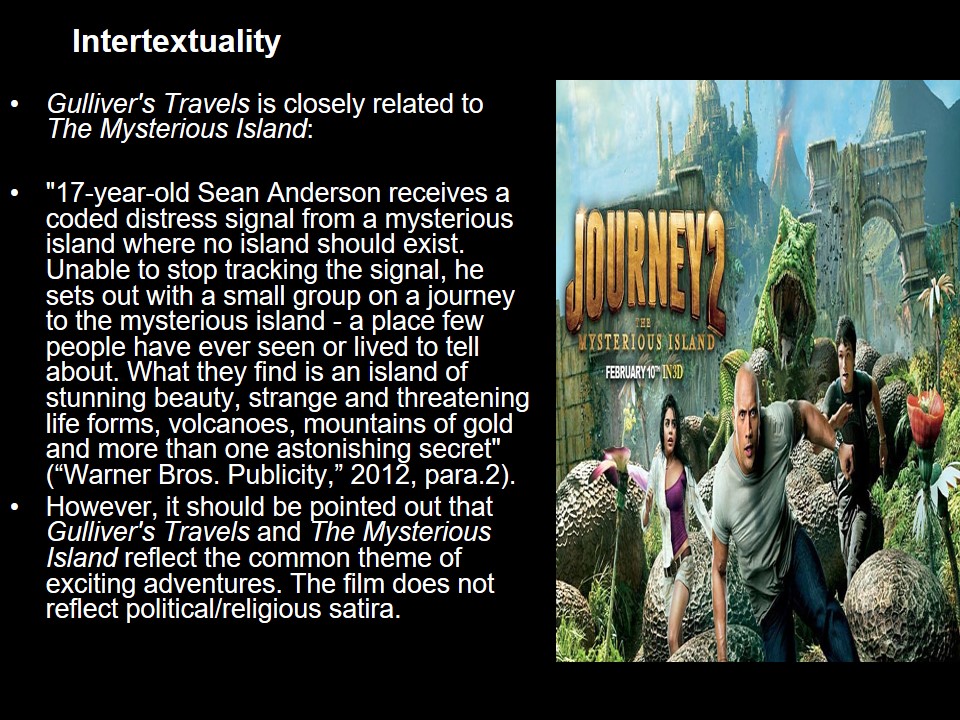
References
LeBoeuf, M. (2007). The Power of Ridicule: An Analysis of Satire. University of Rhode Island, 1-46. Web.
Marshall, L. (2003). Teacher’s Guide To The Core Classic Edition of Jonathan Swift’s Gulliver’s Travels. Core Knowledge Foundation, 1-92. Web.
Nordell, R. (2000). Abstract. UniversityofNebraska – Lincoln.Web.
Rodas, J. (2010). Autism and Irony: Jonathan Swift and Larry David. Academia.edu, 1-8. Web.
Warner Bros. Publicity. (2012). Imdb. Web.